Boundary Value Problems/Lesson 4.1
< Boundary Value ProblemsReturn to previous page Boundary_Value_Problems
Sturm Liouville and Orthogonal Functions
The solutions in this BVP course will ALL be expressed as series built on orthogonal functions. Understanding that the simple problem  with the boundary conditions
with the boundary conditions  and
and  leads to solutions
leads to solutions  that are orthogonal functions is crucial. Once this concept is grasped the majority of the work in this course is repetitive.
that are orthogonal functions is crucial. Once this concept is grasped the majority of the work in this course is repetitive.
In the following notes think of the function  as a substitution for
as a substitution for  .
.
TO SEE ALL OF THE PAGES DOUBLE CLICK ON THE FIRST PAGE. THEN YOU WILL BE ABLE TO DOWNLOAD NOTES. THESE WILL BE CONVERTED FOR THE WIKI AALD (at a later date)
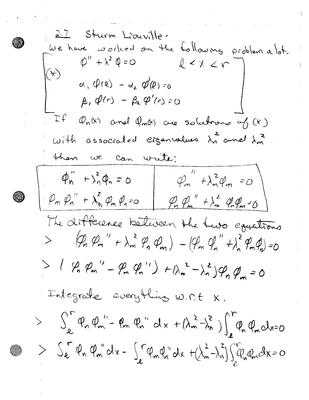
Fourier Series
From the above work, solving the problem:
 with the boundary conditions
with the boundary conditions  and
and  leads to an infinite number of solutions
leads to an infinite number of solutions 
. These are eigenfunctions with eigenvalues 
Homework Assignment from Powell's sixth edition Boundary Value Problems page 71.
Project 1.2
This is a fourier series application problem.
You are given the piecewise defined function  shown in the following graph.
shown in the following graph.
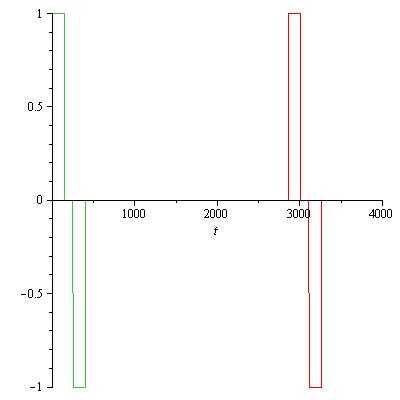
The positive unit pulse is 150 μs in duration and is followed by a 100 μs interval where f(t) =0. Then f(t) is a negative unit pulse for 150 μs once again returning to zero. This pattern is repeated every 2860 μs. We will attempt to represent f(t) as a Fourier series,
- Determine the value of the period: Ans. Period is 2860 μs. The time for a complete repetition of the waveform.
- Find the Fourier Series representation:
 .The video provides an explanation of the determining the coefficients
.The video provides an explanation of the determining the coefficients 
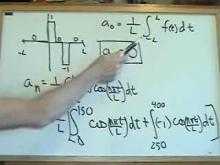
. The results are:


- Using 100 terms an approximation is;
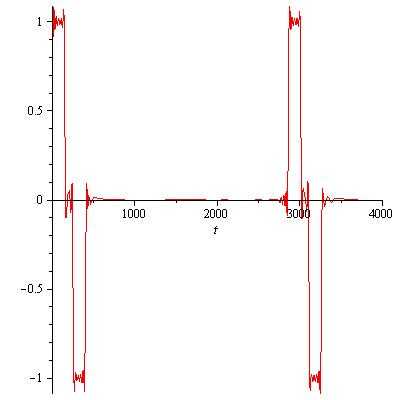
- Shift
 right or left by an amount
right or left by an amount  such that the resulting periodic function is an odd function. Here is a plot of shifting it to the left half way between the +1 and -1 pulses. This is a shiift of b= 200 μs. The new funnction is
such that the resulting periodic function is an odd function. Here is a plot of shifting it to the left half way between the +1 and -1 pulses. This is a shiift of b= 200 μs. The new funnction is  . A plot follows:
. A plot follows: 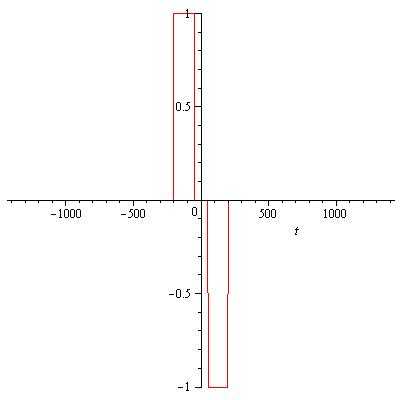 . It could also be shifted to the right by 1230 μs, that is
. It could also be shifted to the right by 1230 μs, that is  is the new function.
is the new function.